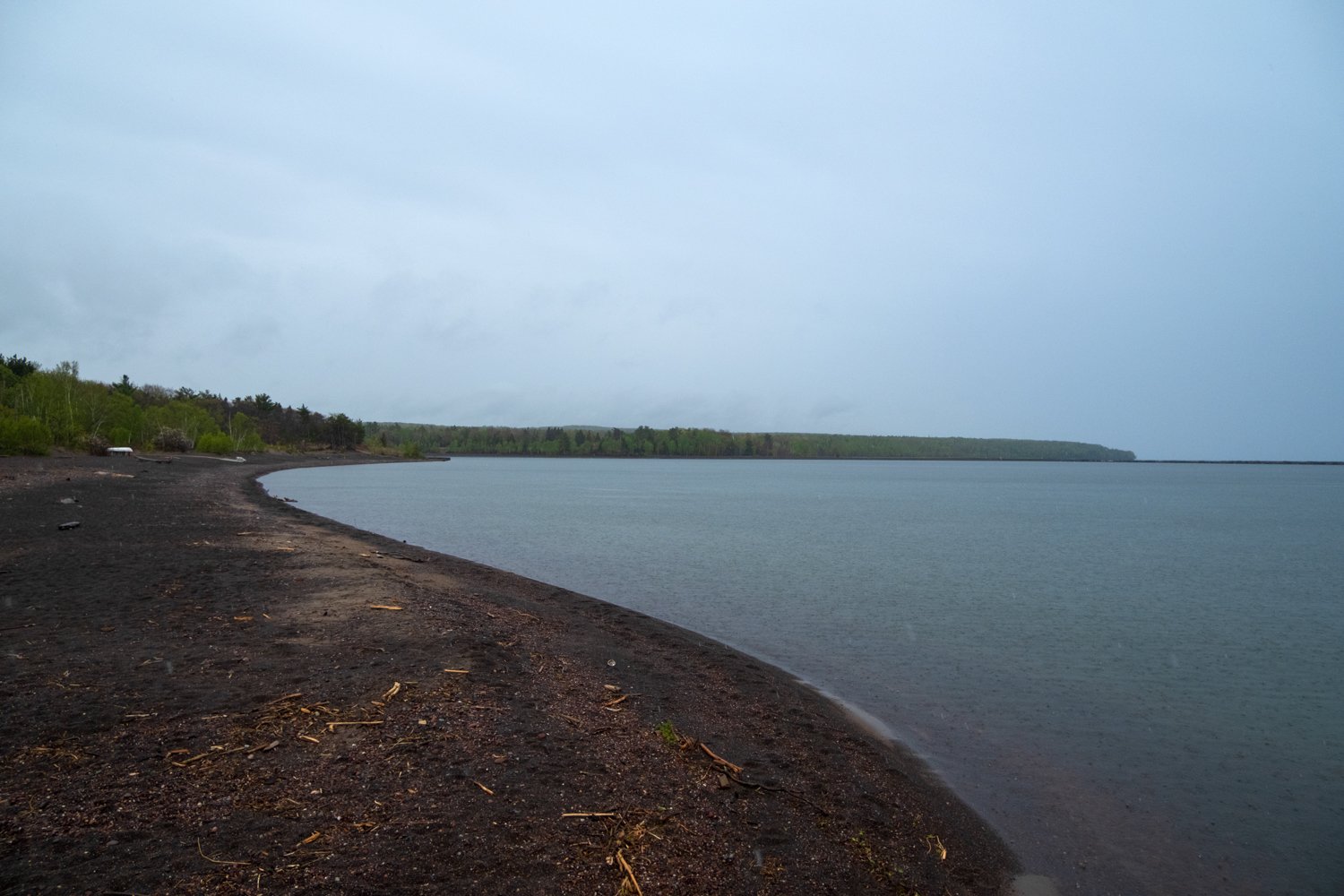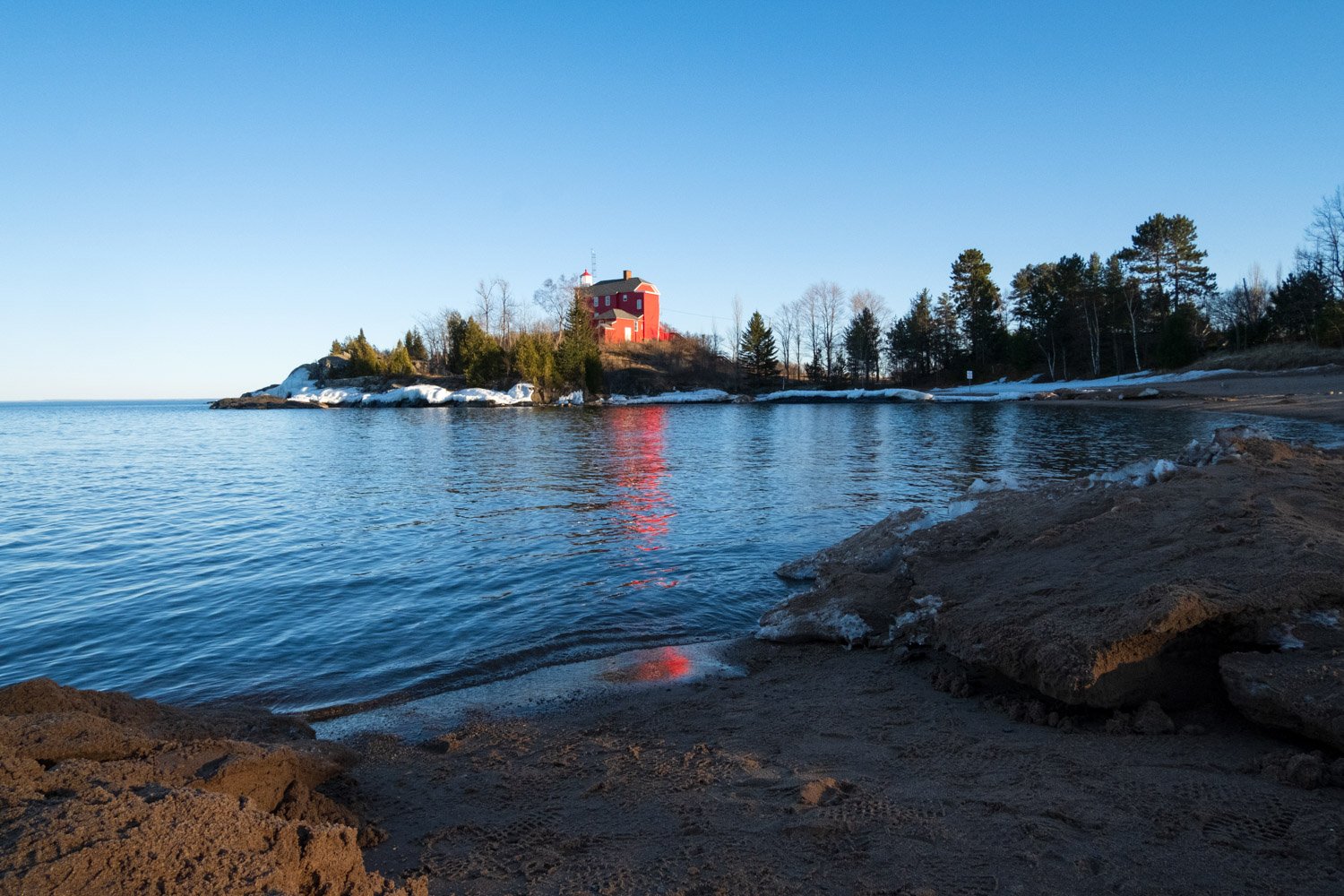Lighthouses in Michigan
Michigan has more lighthouses than any state, which makes sense considering the Great Lakes’ intricate history as a shipping corridor, Michigan’s manufacturing core, and how much shoreline the Great Lakes State has. Michigan has 129 lighthouses across Lake Michigan, Lake Huron, Lake Superior, and various smaller bodies of water.
If you don’t care about the history of Michigan’s lighthouses, you can jump to the list of lighthouses we’ve been to.
Michigan’s first proper lighthouse was constructed in 1825, and dozens more popped up in the decades that followed the Industrial Revolution. The lumbering, mining, and auto industries sped up the need for lighthouses, as more ships called the Great Lakes Home and Michigan became the manufacturing powerhouse of the United States.
In the early days, every lighthouse had at least one keeper. Most lighthouses had keepers’ quarters onsite so the workers and their families could live on-site. Because of the profession’s intricacies, many lighthouses had assistant keepers.
Michigan has more lighthouses than any state, which makes sense considering the Great Lakes’ intricate history as a shipping corridor, Michigan’s manufacturing core, and how much shoreline the Great Lakes State has. Michigan has 129 lighthouses across Lake Michigan, Lake Huron, Lake Superior, and various smaller bodies of water.
If you don’t care about the history of Michigan’s lighthouses, you can jump to the list of lighthouses we’ve been to.
Michigan’s first proper lighthouse was constructed in 1825, and dozens more popped up in the decades that followed the Industrial Revolution. The lumbering, mining, and auto industries sped up the need for lighthouses, as more ships called the Great Lakes Home and Michigan became the manufacturing powerhouse of the United States.
In the early days, every lighthouse had at least one keeper. Most lighthouses had keepers’ quarters onsite so the workers and their families could live on-site. Because of the profession’s intricacies, many lighthouses had assistant keepers.
The view from 40 Mile Point Lighthouse
Despite building dozens of lighthouses in the late 1800s and early 1900s, Michigan still saw numerous shipwrecks due to primitive navigation technology and the unpredictability of the weather on the Great Lakes. Because wrecks were so common, numerous Lifesaving Stations were set up along the shores of the Great Lakes. When a ship was wrecked, these brave men went out into the storm to look for survivors. These stations were often paired with a lighthouse, but this wasn’t always true.
As technology progressed, lighthouses were modernized, and kerosene was phased out in favor of electricity or gas, making most lighthouse keeper jobs obsolete. In Michigan, this typically happened in the 1950s, 1960s, and 1970s. A control center could have eyes on all the lights on the Great Lakes at once, eliminating human error and jobs.
Technology continued improving, and new navigation software made many of Michigan’s lighthouses obsolete. Over time, the Coast Guard declared dozens of Michigan lighthouses surplus and tried to demolish a few. However, very few were razed.
Most towns consider their lighthouses a part of their communities. Despite not aiding freighters, they were still used as navigational beacons for fishermen and recreation, and it’s become a common activity to walk out to the end of the pier to see a lighthouse any time of day, but particularly at sunset on the Lake Michigan side and sunrise on the Lake Huron side. Thanks to Michiganders’ love for lighthouses, local governments and non-profits fought to keep their lighthouses standing and active.
Because of their hard work, we still have as many lighthouses as we do. Many lighthouses still have some Coast Guard oversight; however, they are kept by local governments and volunteers. Pair these structures with those still operated by the Coast Guard, and you’ll land at the 129 lighthouses in Michigan.


























